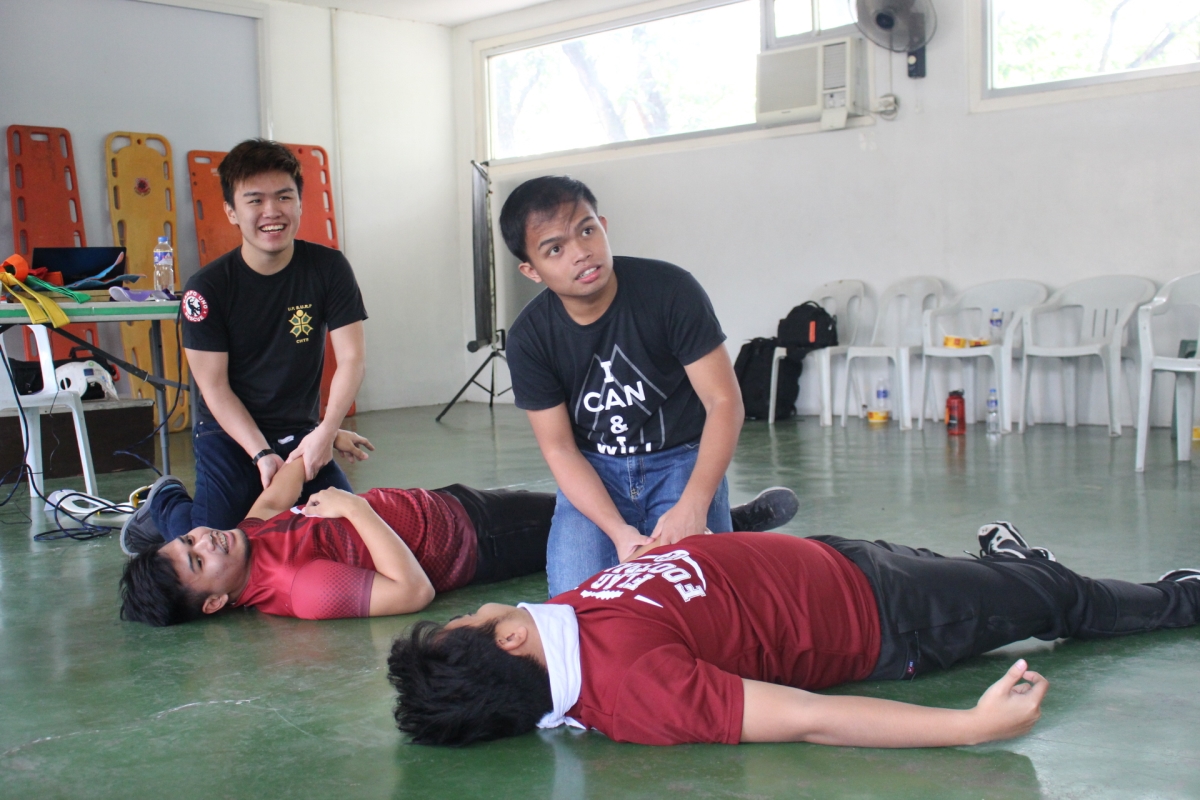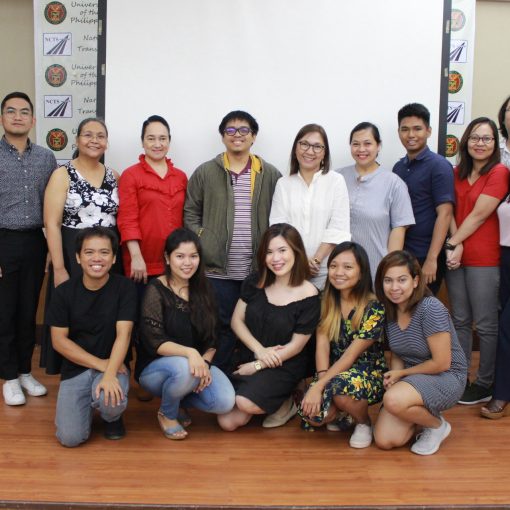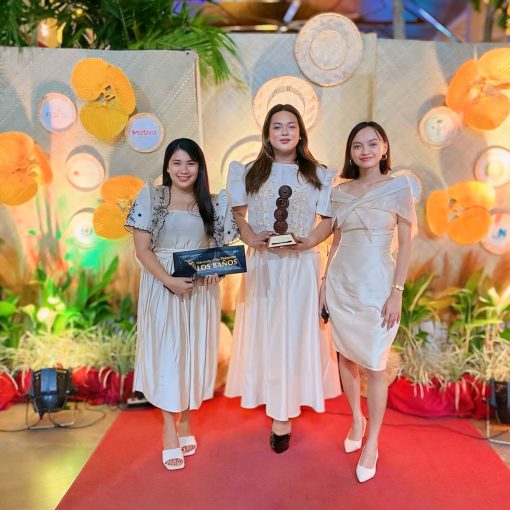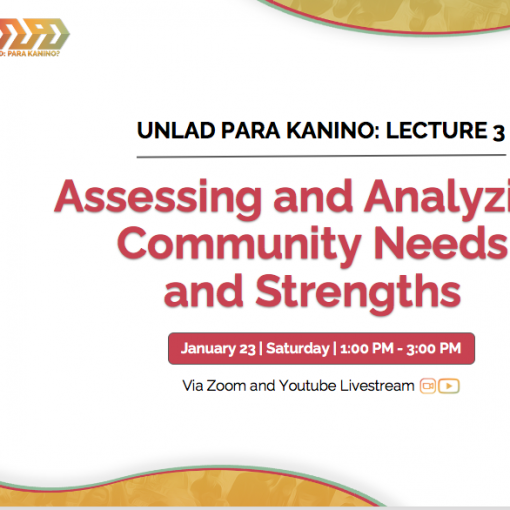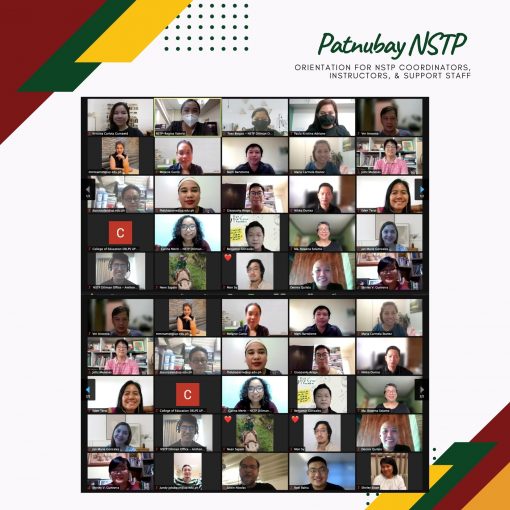There are many different ways to save a life. There are small ways, like sending someone a song, or maybe through prayer, or even a meme. Everyone, in their own small way is capable of saving a life. But at the end of the day, we have to realize that there’s a need for us to actually know how, and have the skills to literally save someone’s life.
This is how I found myself at the National Engineering Center (NCE) on a Saturday morning at 8 AM. NSTP’s National Service Reserve Corps (NSRC) Training for First Responders was a three day program, consisting of various lectures and demonstrations on first aid. Despite my first aid background from being a member of the UP Red Cross Youth, I found there was still so much I needed to learn and develop as a first aider.
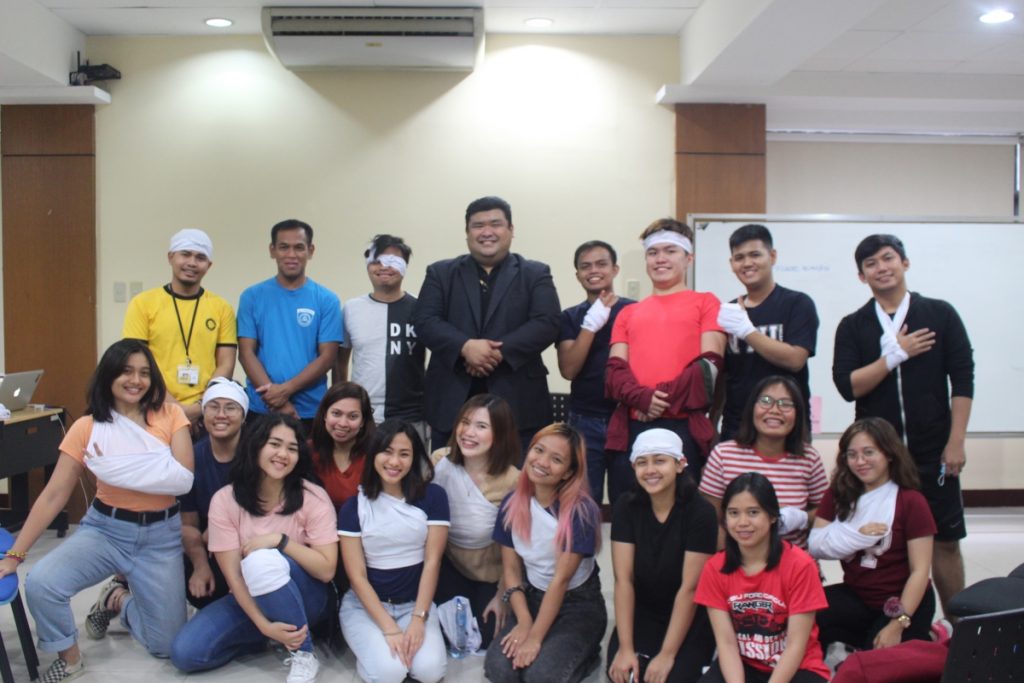
The first day consisted of basic knowledge on first aid: the first half being lectures, and the second being learning bandaging skills. Led by Dr. Rodrigo Angelo Ong, Commander of the Medical Special Support Squadron, Philippine Coast Guard Auxiliary (PCGA), the lectures consisted of basic first aid knowledge: duties and responsibilities of first aiders, basic injury and bleeding management, with simulation activities and easy quizzes along the way. It was an intensive few hours of lectures in the morning, followed by a series of bandaging techniques for different types of injuries.
I’ll be perfectly honest, waking up to be in UP at 8AM wasn’t the most ideal, especially since these days were rest days, but all the sessions proved that they were worth getting out of bed for. The second day, in particular, was my favorite. The first half of the training was emergency rescue and transfer. Our instructor was Mr. Ceejay Custodio, a trained first responder. He taught us basic need-to-knows for first aiders. Along with Mr. Irvin Calapre, Mr. Rhonie Ola and Mr. TJ Laurente, who are all members of the PCGA, they taught us how to do a full body inspection and take helmets off motorcycle patients with possible spinal injuries. The proper use of a spinal board was also demonstrated.
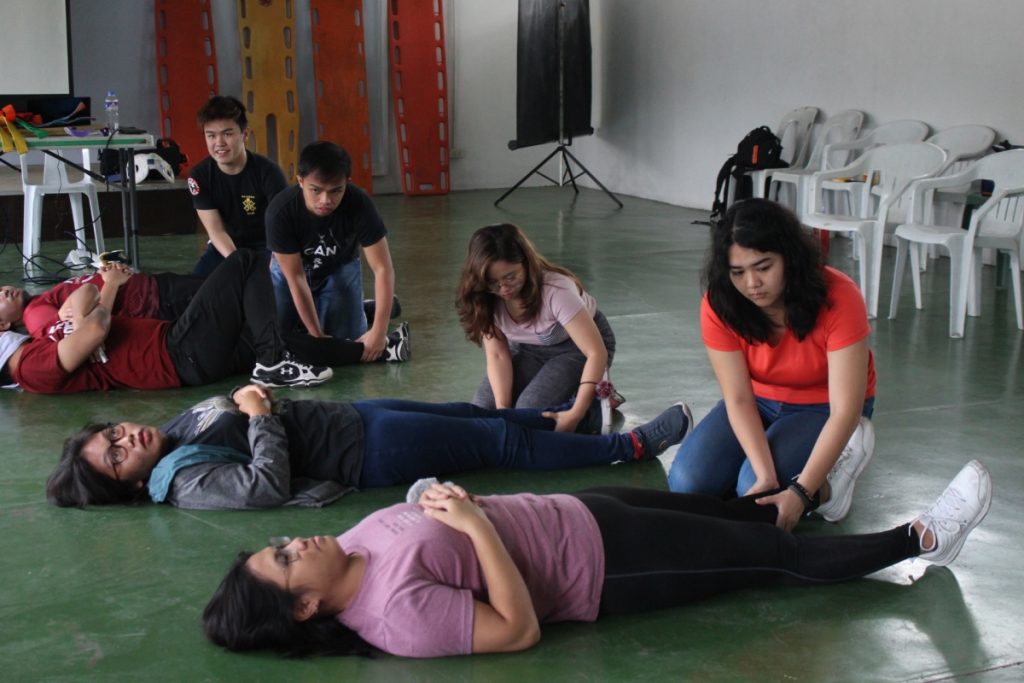
Spine boarding, in particular, I found the most fun. We did it in different groups, and we experienced various scenarios, both theoretical and simulated. We experienced the physical strain first responders have to endure, and the strength required of them. We were made to go through a small simulated space with challenges of height, and of course, it was a bit nerve-wracking at first, but you realize the significance of the training, when considering their real-life possibility. It was a bit physically taxing for a morning, but I think everyone in the training session managed pretty well, especially since it was everyone’s first try. The instructors were all quite helpful, and made sure to correct us when we made mistakes, warning us to always be conscious of the state of the imaginary patients.
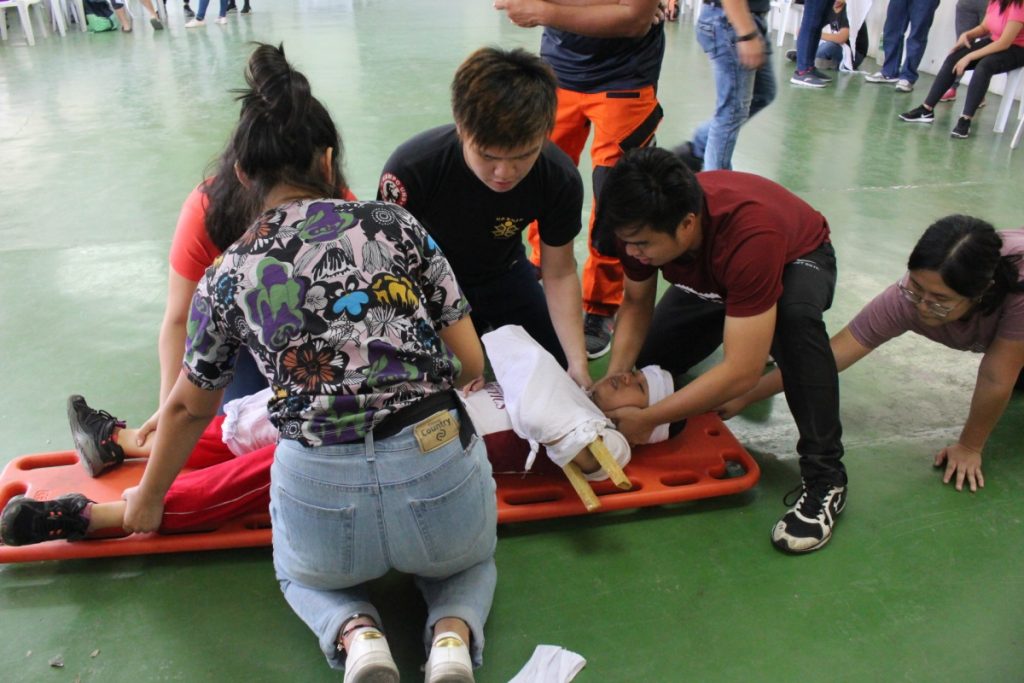
Within that same day, we were taught how to manage severe bleeding cases. These are the kinds of drastic cases you only ever hope to see on TV, such as amputated limbs and gunshot wounds. As first aiders, we weren’t taught how to use a tourniquet, but here, we were taught to, and we were also taught how to pack wounds. Packing a wound, in simpler terms, is basically stuffing the wound with sterile gauze to stop the bleeding. We were all a bit queasy, at the thought of shoving gauze into someone’s wound with our gloved hands, but we all knew that this was information that could save someone’s life.
The last day was the one we anticipated the most. It was a CPR course. Dr. Ong was the instructor again for that day, and he brought with him several CPR dummies. My orgmates and I were familiar with the process, as we had to undergo first aid training, but we still learned something new that day. What we did during CPR was something like sports conditioning, where we familiarized ourselves with the beat to which we were supposed to do chest compressions with. My friends and I cited different beats we could use for both 110 and 120 BPM, and it made practicing compressions more fun. Dr. Ong made us practice for about 2 minutes, and around two rounds per speed. Dr. Ong told us that it was important to know how physically taxing CPR is on the first aider, and the importance of switching CPR performers when tired. At the end of the session, Dr. Ong told us a story which gave us another perspective on the basic life saving process. He said that knowing CPR, and performing CPR is not only for the patient himself, but also for their families. He said that CPR wasn’t just to try to resuscitate the patient, but it was also for the family: for the family to know that the first aid provider did their very best, and in the worst case scenario, it gives the family time to say their last words.
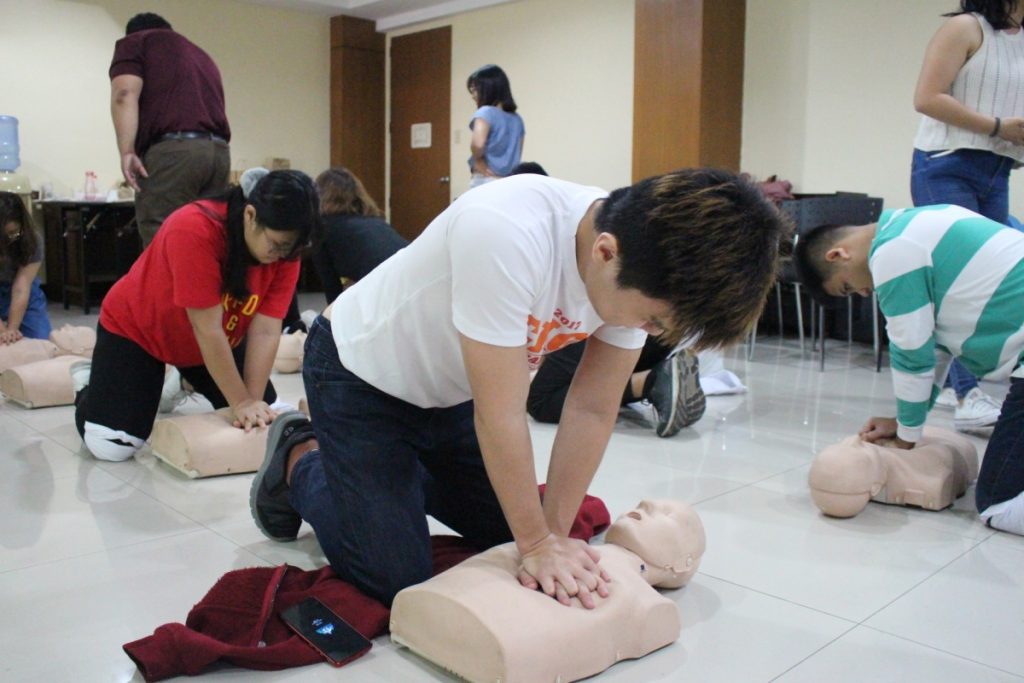
After lunch, Dr. Ong taught us about the importance of disaster preparedness: being aware of your surroundings, and its state. He told us about many of these disasters which happened all around the country, telling us how many lives are lost through lack of disaster preparedness. He told us many stories of his rescues with the coast guard, losing count of how many people they’d saved, and how many they’d lost. It gets you thinking about all of these other disasters happening in the world, and how many lives are lost– how many could have been saved, and how many losses could have been prevented. It’s kind of scary to imagine yourself in a situation where you’re absolutely helpless in a disaster, or even in a much smaller situation.
When I first applied for UP Red Cross Youth, I was always asked, why do you wanna join the org? My simple answer was always, “I want to help people.” But when you start first aid training, you come to realize that it can’t always be about heart, and a passion for service. It’s about maintaining the desire and will to better yourself and your skills to be able to help others. The beginning of this three-day course taught me that I still had much to learn and improve, and at the end, I’d like to believe I came out as a better prepared first responder (with two certificates to prove so as well!).
After this training program, I realized the importance of RCY’s motto: “Service takes heart, first aid takes skill.”
by Shanaia Roxas
The NSRC Training for First Responders was initiated by the NSTP Diliman Office through the Extension Grant Project by the Office of the Vice Chancellor for Research and Development. The training aims to provide an opportunity for continuous learning of the reservists to equip them with necessary skills and knowledge needed for them to contribute to the disaster risk reduction and management in the University. The article was submitted by Ms. Shanaia P. Roxas, IV-BA Creative Writing, one of the training participants. For the full proceedings of the three-day training please see: https://drive.google.com/file/d/12Oi_iXC92HJqtccaTw4QleS2Gg0SSkfR/view?usp=sharing

